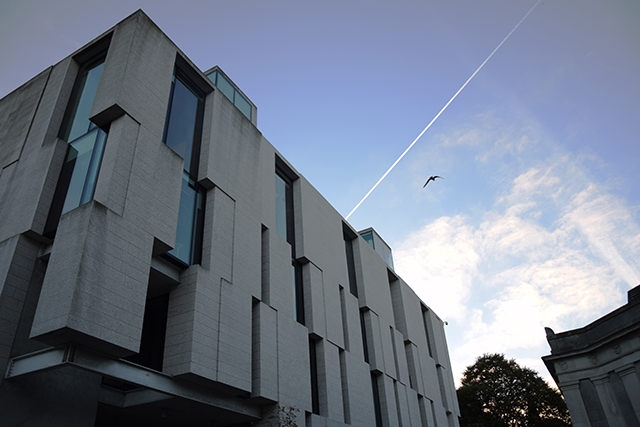Women and War: Representations in the Creative Arts brought the devotion and drive of different professions together. The panel, jointly organised by the Trinity Long Room Hub and Wexford Opera, included The Irish Times’ Lara Marlowe, artistic director of The Wexford Festival Opera Rosetta Cucchi along with College professor and facilitator Eve Patten. Due to large public interest, the conversation was held in the Arts Building’s Thomas Davis Theatre. This year, The Wexford Festival Opera is exploring the presence of war, a force that has impacted women and been influenced by them throughout history.
With varying careers in academia, research, performance and journalism, the panelists began the discussion on the concept of portrayal. Prominent women in periods of wartime have included Cleopatra, depicted with her celestial crown, and Rosie the Riveter, with her gaze of non-negotiable red and bomber assembly line blue. Although these women are regarded by the panel as iconic figures, women in conflict zones fight daily for equitable treatment. Cucchi detailed the invasions of inequality in the everyday, and the aim of defeating prejudice in hopes of diversity.
With a background in piano and theatre, Cucchi stated the presence of women warriors across operatic settings. Historical examples included Monteverdi’s Il combattimento di Tancredi e Clorinda and Beethoven’s Fidelio. Women’s strength in these instances are demonstrated not only in combat, but through strategic decision-making and independence. These characters enable the storyline and give the work its power.
Turning to film, Cucchi mentioned Two Women starring Sophia Loren. Loren, her name evoking dreamy glamour, offers a distinctly different vision. The film’s artillery shell with its devastation and destruction is what Marlowe named “concentrations of reality” which is art’s relation to fact.
As a journalist, Marlowe has a different responsibility, she wants people to know the truth and care about it. Marlowe shared photographs she had taken while in war zones, separating them into three categories: women as soldiers, women in mourning and women as refugees. One of the women she spoke to while in Ukraine was a soldier. Marlowe asked her if she had experienced unwanted sexual advances from the men around her, and the female soldier replied: “No, I have a gun.” The panel often returned to the subject of rape and how sexual trauma has always been related to women’s experiences in war time. Although Marlowe spoke directly about her most recent time in Ukraine, her work has also taken her to the American invasion of Iraq in 2003. She noted that unlike previous wars, communication in modern wars is not a challenge. Rather, the undying struggle is to understand wars across their time and contextual barriers.
When the panel asked for questions from the audience, one attendee raised the issue with art allowing war to become sanitised and aestheticised. Marlowe responded saying that creative interpretations serve the public good. We look to art and storytelling for the power of legendary figures, and you can find heroism in operas. Both journalists and artists want people to pay attention. Throughout the discussion, all three panellists emphasised the eternal power of art as a weapon for female empowerment, proving imagination in action is truly a force to be reckoned with.
The evening finished with a reception in the Trinity Long Room, but the 72nd Wexford Festival Opera is actively on stage this autumn.






